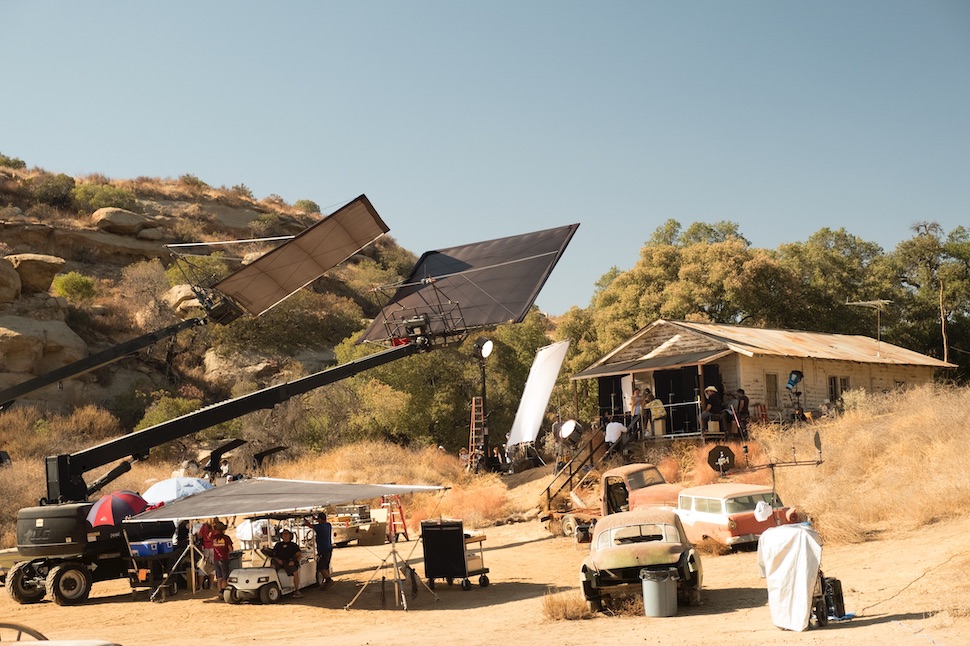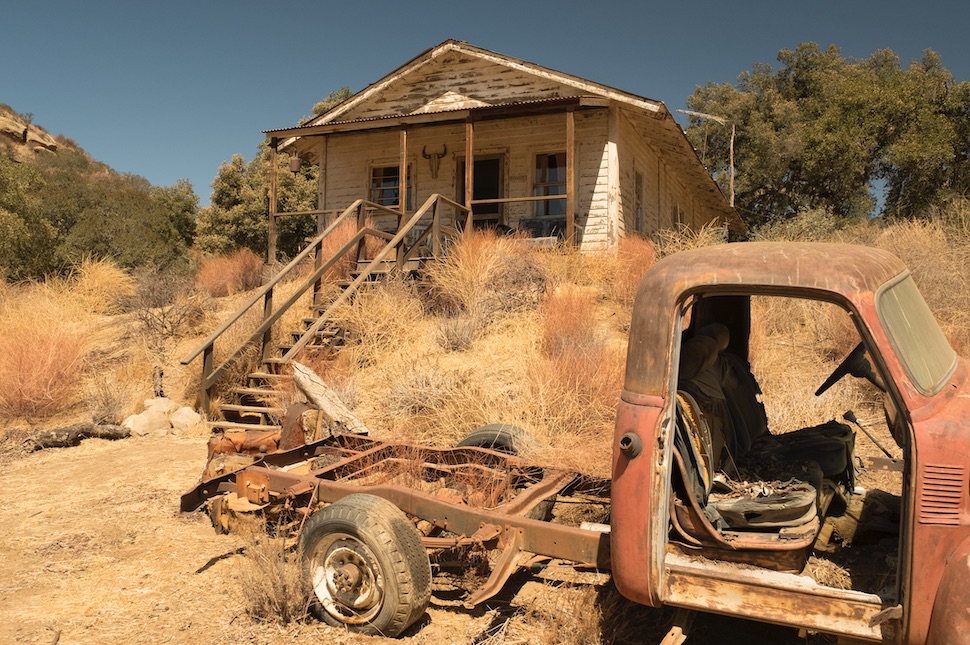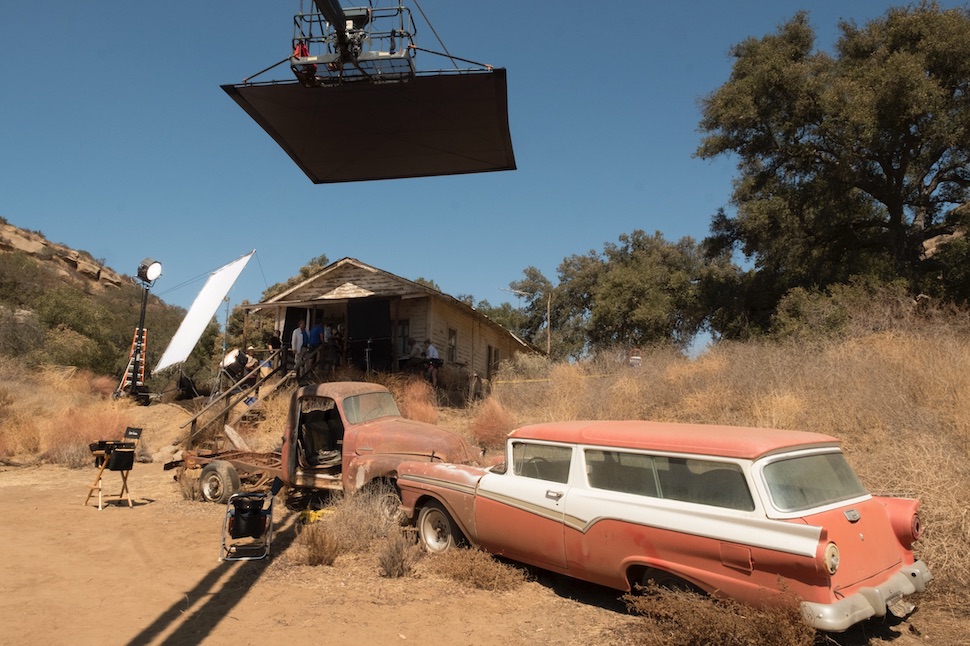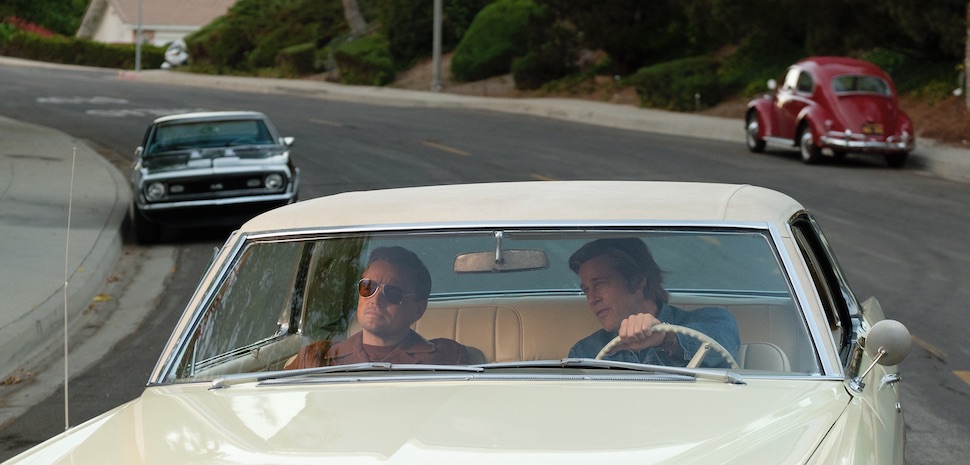It’s pretty much considered common knowledge now that Quentin Tarantino’s Once Upon a Time in Hollywood becomes an even better movie on a second viewing. The first time is too filled with anxiety and dread about what might happen later in the film. The second time, with that concern alleviated, we get more of a chance to sit back and just take a look around. And this movie is gorgeous. And all of this is great news for Barbara Ling, who earned her first Oscar nomination for the production design of Once Upon a Time in Hollywood.
It’s always great to talk to a brand new Oscar nominee and, as Ling puts it, she was still “swirling.” But she composed herself enough to still give us a behind-the-scenes look at what made the look of Once Upon a Time in Hollywood so special. And when you don’t think they had to build sets (like the Spahn Ranch, which was completely built as a set inside a park, as opposed to just filming at an old ranch) she takes that as a compliment.
Congratulations on your first Oscar nomination.
Thank you so much. I’m still swirling with the news. I’m very excited.
“Swirling” seems like a good way to put it.
You just spin! Your texts are screaming off. You can’t even return any of them. You just swirl. You do. It’s quite an unbelievable thing when that happens. You hear from people you went to grammar school with.
When someone from grammar school calls you that you haven’t heard from in a while, what do they say? Do they reintroduce themselves?
“Do you remember me?” You’re quickly trying to remember them. Which one was John? It’s funny and exciting.
Once Upon a Time in Hollywood has now been in the zeitgeist since it played at Cannes in May.
People keep seeing it. They say, “I’ve seen it three times.” I go, “Really?” It’s that interesting to me, that people see it more than once.
Well, it’s even better the second time.
Oh, I think so, too.
When you see it the first time, it’s almost a different movie than it will ever be again, because…
Because you’re anticipating.
The end. Exactly. The Spahn Ranch scene is the perfect example. The first time you see it, it’s terrifying. The second time you see it, the entire thing is hilarious.
I love that you’re saying that, because that’s exactly how I think it is. That’s what’s so great about people going again. It’s like they missed some of it, in that anticipation.
I feel that people are seeing it so often, that’s good news for you. Because people are taking their time and taking a look around in this thing, which they probably didn’t do the first time. A really beautiful shot is when we see Cliff and Rick driving and then we get that wide shot of the street that looks like it came straight from 1969.
Well, it’s just that it’s very detailed. That’s the stuff. I love that you see that and go, it’s not much. But, as he turns the corner, you just feel like you’re there. That’s what we tried to do, as much in every frame as we could. If something jarred out, it takes you right out of it. We were careful about that, because it was important, particularly to Quentin, that nothing grabbed you right away and you go, “Oh well, they just made that.” It’s that you wanted to feel that you were actually there, which is why he wanted everything in the real world there. Rather than, later on, we’ll CGI that piece on top of the building. It’s that everything was, in reality, there. It makes a difference, psychologically. I really see it with how people respond to this. Of just saying, I so felt I was there. It’s because it’s a real-world we put back, you know what I mean? It’s actually really there. You can walk by it, and lean on it, and walk in a door. It’s interesting how people respond so viscerally to it, which I think is because of that.
Even a scene like the first time Cliff is driving and meets Pussycat. How long does something like that take to set up?
Well, it is huge. The building she’s in front of was, of course, not really that building at all. It was restaurant, with very little facade, that we built out and then put this nightclub back. It was weeks, actually, to get that striped. It was done unbelievably carefully, and built out, because it was an iconic place that we wanted to just bring back for a fragment of time. That’s what it was in L.A — you knew these iconic places and people would hitchhike in front of them, because you could get people to stop there. That entire area is an area that doesn’t look at all like that, but we got permissions, and permits — even to the point where the sidewalks actually were driveways. So, you had to now create fake sidewalks over the driveways. That’s the fun, in a way, of having something that looks nothing like that, and you’re able to actually, very carefully, and with an enormous amount of crew, rebuild it back to something. It’s weeks.
Is there a scene you pulled of that you’re proud of, but the average person is going to have no idea how much work that took?
Well, I think that’s most of it. Certainly Spahn Ranch. A classic case of a park that had no structure.

See, this is a perfect example. It looks like you just filmed on a ranch.
Many people ask, “Did you just put back the buildings?” That was just an empty park in the Santa Susanna pass. Those are the great moments when you start it. Quentin and I are there. I say, “We can put George’s house here,” and you’re looking in this vast, empty, beautiful landscape of terrain. Then you start to piece that together. Then you put a little white model together to go through it with Quentin, on staging. That’s months of work: to put the buildings back in, and then to age everything. Then, to put all the dressing on top.

Yes, people say, God, it’s so cool that Spahn Ranch was still around. I go “no, no, it’s not.” I like that people feel that it looks like something so natural, in a way it’s a bit of a compliment.

That’s a nice way to look at it.
And you want things, sometimes, to look like a set. Like the Nazi war room, so to speak. You want to feel like we’re doing a movie of a movie being made, so you want that to have a little flatness to it. You know it’s not really the Nazi headquarters, but that’s the fun of how Quentin put this movie together. It’s that some things are a movie within a movie, and some things are reality. When you’re driving on the streets, you’re in L.A., but when you’re watching Leo acting in other things, you’re inside of a set, inside of a movie. It’s not quite detailed enough. You know it seems a little funny, but you’re not too sure why. Particularly, sets of that era, when everything was done on sound stages. That’s why we also had fun with Leo practicing with his flame thrower, behind the walls of the set. “Can you make this flame less hot?” That’s one of my favorite lines.
“It’s a flamethrower, Rick.”
I mean, that’s the genius of Quentin: giving you those little funny tidbits behind the wall of the set where he’s a Nazi killer. It is a movie within a movie, and that’s the fun. Except when you’re on the streets, and that’s the fun of being able to bring back L.A. At least, the essence of what L.A. was in ’69. It’s hard in L.A., they have stripped more down than you can possibly imagine. Even shooting the movie, you couldn’t run fast enough. “Oh my God, they’re tearing down the wall, we were just about to paint a mural!”
Wait, that actually happened? Someone was tearing down a wall that you were going to use?
Locations would call me and say, “We have bad news.” I go, what? They go, “Remember those little red stripes we saw on the ground? Well, right now, it’s the demolition crew.” You couldn’t stop them. And just the cranes on Hollywood Boulevard that started appearing in the distance. We’re like, whoa, what is that? They’re tearing down fast, and just building. It’s glass and steel, it’s apartments, towers. Yes, we got this movie made just in the nick of time. It would be a little harder next year.
You can contact Mike Ryan directly on Twitter.







